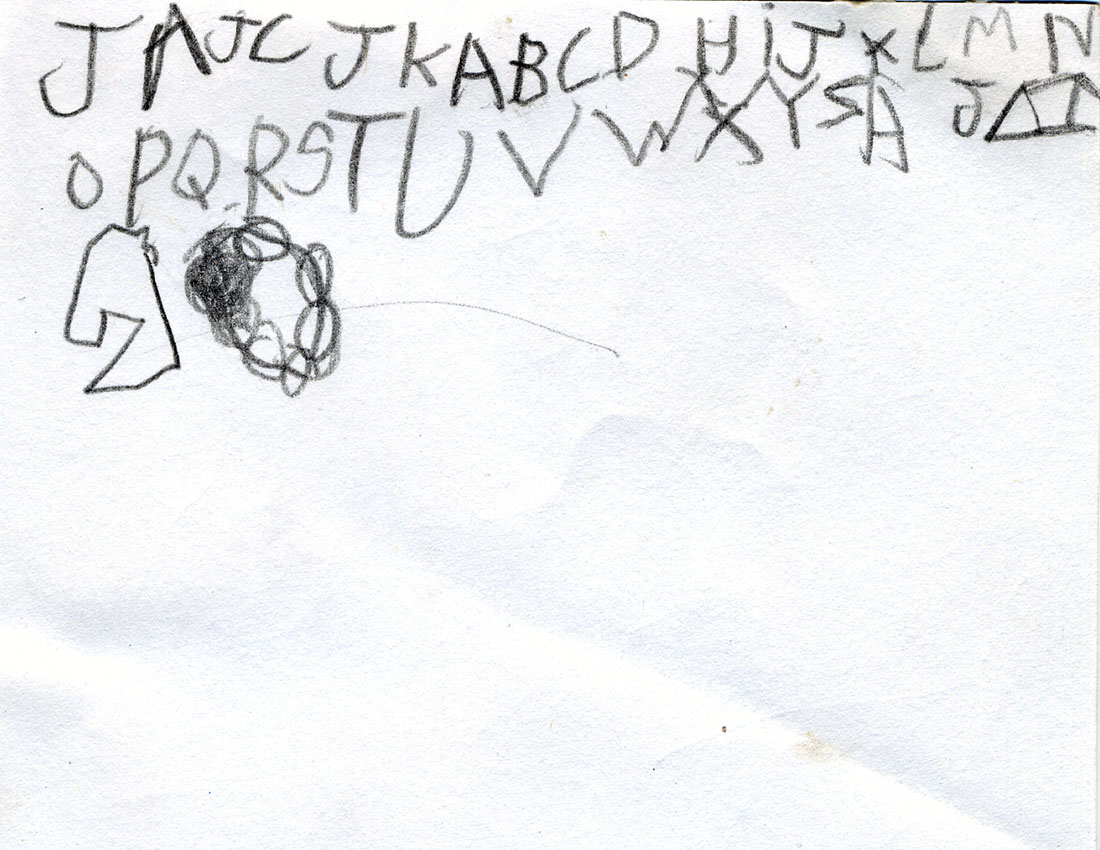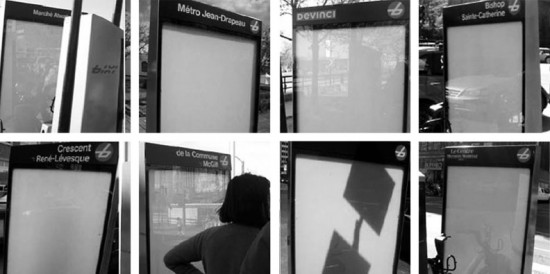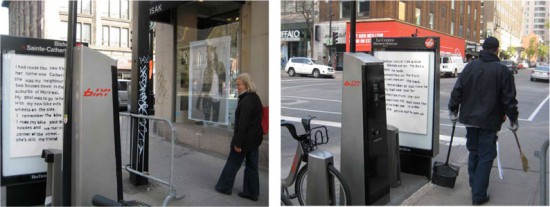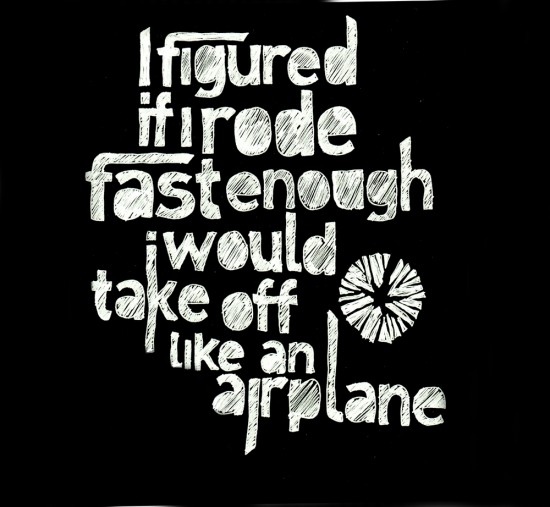“What the map cuts up, the story cuts across.” (de Certeau 1984, 129)
Speeding through Montréal on a BIXI bike, I grip the handlebars loosely in my hands and shift weight from pedal to pedal, tipping side to side. I leave my worries behind. Our single-file expedition sails breezily across Pont de la Concorde—we are modern day voyageurs looking to trade our insights. We pass Moshe Safdie’s Habitat 67, riding beside the rolling St. Lawrence River until we hug the Lachine canal. Sweaty, spandexed commuters pass us, intently focused on the clearly marked bike trail.
We turn and enter into the heart of the city. Our procession weaves along Boulevard de Maisonneuve during rush hour traffic. As our bikes twin the line of slow moving cars, we pass several BIXI docking stations, each marked by a solar panel mounted on a slim pole. These panels power tracking devices in each bike so that users can check availabilities at each station using an online application. While drifting by station after station, I notice the city maps that are usually mounted in frames are missing. These blank signs beckon me to intervene like a blank page in a notebook.
I am instantly inspired to build on a series of stories of first-time bike rides filmed by Hyuma Frankowski [link: http://vimeo.com/12981026]. I share the idea with my cycling companion, He Li, and she recounts to me her experiences of riding on her dad’s bike in the streets of Beijing:
Beijing: Before I could ride a bike, I always sat on my dad’s—sometimes on the front, sometimes on the back. At that time, he only had one coat for protection from the rain. Sometimes my dad used the coat to hide me, in order for the police not to see us. (He Li)
Later, I collect more stories from Josh [Singer]1 and Alice [Jarry]2 about their earliest memories of riding a bike, and ask them to trace out the routes they took with meandering lines on scrap paper. Back in my room, I transcribe excerpts from the three stories on a large sheet of paper recovered from the trash.
By the time I hit rue Ste-Catherine, it’s 3:00 am. I walk along the street, still noisy with traffic, and stop at the BIXI docking station on the corner of rue Guy. Swiftly, I peel the backing off of double-sided tape affixed to the reverse side of the poster and with an expansive sweep of my hand, I flatten it to the empty sign frame watching over the docking station. I step back and admire Josh’s cycle story in handmade lettering:
Back on rue Ste-Catherine the next night, I post two more large posters with handwritten cycle stories. A guy on a BMX bike stops to inquire about what I am doing. He’s a graffiti artist and he tells me his tag. He continues to watch as I peel the backing off long strips of Nito tape from the large sheet of paper unfurled on the sidewalk. The graffiti artist advises me to look out for police before biking off.
The next day, I snap photos of the posters and present them to the DesignInquiry participants. The advertising campaign was small but heartfelt—it was my way of reconnecting adults to the childhood pleasures of riding a bike.
After the review, I corner people in the hallway and ask them to draw the route taken during their first bike ride. One-by-one, the designers close their eyes, take a moment of reflection, and carefully trace their memories. The paths layer atop one another in a maze of intersecting lines on a large, single sheet of paper. More than one person points out gaps in their otherwise fluid line stating, “That’s where I fell down.”
Random Sample from Tracings of First Time Bike Rides
Later in the week, I walk along St-Viateur and linger in a secondhand store. I try to speak to the clerk in French (badly) and suddenly realize that I have not included French translations on my signs. I feel a twang of shame; they wouldn’t conform to the provincial language laws.
Despite my oversight, I also feel relieved and rejuvenated. I have fulfilled my goal to discover some of what makes a sustainable design city and have learned why it isn’t necessary to own a car in Montréal. These epiphanies largely occurred during random encounters and transitory moments—conversations with individuals on the Métro, exchanges during BIXI bike rides, and observations while walking around the city. Leaving DesignInquiry, I’m now coasting on the possibilities of a Sustainable City of Design.
___
1 New Jersey: We used to play dodge ball on our bikes. I remember getting an old plank of wood we used to have in the yard. I took it and tied it to the top tube with rope and figured if I rode fast enough I would take off like an airplane. (Josh Singer)
Jennifer Nichols
2 Longueuil: I made this new friend—her name was Catherine—and she was my neighbour from two houses down in the suburbs of Montréal. My goal was to go to her place with my new bike that had training wheels on the side. I remember the bike was red. I rode my bike past the two houses and we met on the corner of the street…she’s still my friend. (Alice Jarry)









